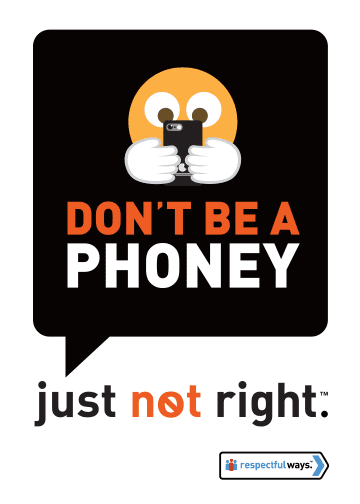Don’t Be A “Phoney” – Cell Phones, Social Media and Teens
January 3, 2018
Can you survive without your smartphone?
Could you close out your social media accounts without feeling disconnected?
 For many of us, the answer is obvious: not without a difficult period of adjustment. When Gallup polled smartphone users, 46% of respondents reported they couldn’t imagine life without their devices. Another four in ten predicted they would experience significant stress if deprived of their phones for a day. Nearly one in three are self-confessed addicts.
For many of us, the answer is obvious: not without a difficult period of adjustment. When Gallup polled smartphone users, 46% of respondents reported they couldn’t imagine life without their devices. Another four in ten predicted they would experience significant stress if deprived of their phones for a day. Nearly one in three are self-confessed addicts.
It’s not hard to see why we’re so attached to our technology. Our smartphones help us do all kinds of things. We use these devices to find out how a friend’s vacation went, to research a project, to entertain ourselves while waiting in line, and to locate our missing keys.
Little wonder then, we spend so much time with them. The average user unlocks his or her phone 150 times a day. Studies reveal American teenagers spend nearly nine hours a day consuming media – most of it mediated through their phones.
Social-Emotional Learning can address teen phone addiction.
In developing the Respectful Ways curriculum for Don’t Be a Phoney, we have realistic goals. We don’t expect students to abandon their phones and swear off SnapChat altogether. But we do want students to reflect on their relationships with their iPhones, and become conscious consumers of social media.
There’s good reason for them to engage in this assessment. Consider: 
- Recent studies have uncovered a correlation between excessive time online and depression
- Cell phone use can heighten risk for a range of physical and behavioral ailments.
- Social media is reshaping teens’ brain circuitry.
Taking stock of our online lives will take effort. One of our activities challenges students to engage in a voluntary fast from social media for four days. We know this won’t be easy. Many digital natives begin grappling with withdrawal symptoms within minutes of powering down their devices. They’ll certainly find it hard to sustain their fast beyond a day.
 The point of the fast isn’t just unplugging; we also want students to plug into the relationships around them. This investment in real friendships will help them put their virtual lives into perspective.
The point of the fast isn’t just unplugging; we also want students to plug into the relationships around them. This investment in real friendships will help them put their virtual lives into perspective.
Near the end of The World Until Yesterday, Pulitzer Prize-winning geographer Jared
Diamond contrasts life in the traditional societies he studies in Papua New Guinea with his daily experience as a Los Angeles resident. He makes clear he wouldn’t exchange the amenities of modern life for the jungle. Still, he thinks these cultures have something to teach us about being fully present: enjoying natural beauty, long conversations, and shared meals without distractions. Lack of dependence on technology helps promote these goods.
SEL can help teens unplug from phones and plug into life.
The point of teaching students not to be “phoney” is to instill an appreciation for the richness of life outside social networks so they can make responsible decisions about how they manage their time. Removing themselves from life in the virtual world might be the only way to see those interactions for what they are. If we can’t imagine being without our phones, we’ve developed an unhealthy dependence. By breaking these addictions and investing in personal relationships, we can help students get the best of both worlds – real and virtual.
This entry was posted in Grades 6-12, SEL News. Bookmark the permalink.


 Our 1st graders loved the Be Kind: It Feels Good course. The Kindness Hunt and bucket filling activities were the best. Very engaging.
Our 1st graders loved the Be Kind: It Feels Good course. The Kindness Hunt and bucket filling activities were the best. Very engaging. The Bored, Get Creative module was perfect for our 4th graders pre-winter break. We talked about things they could do if “bored”.
The Bored, Get Creative module was perfect for our 4th graders pre-winter break. We talked about things they could do if “bored”.